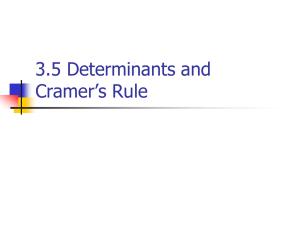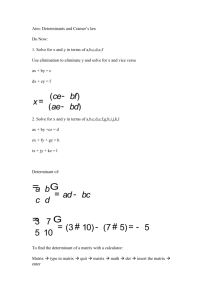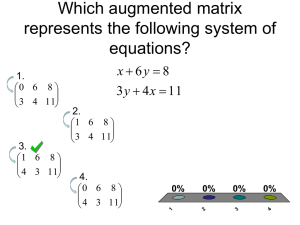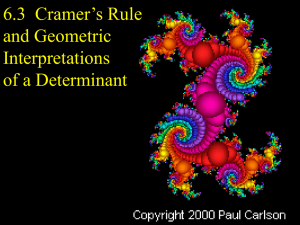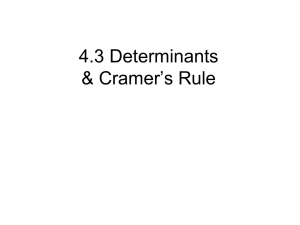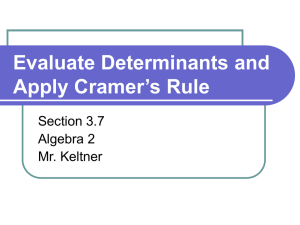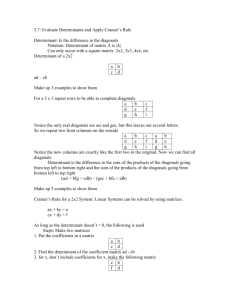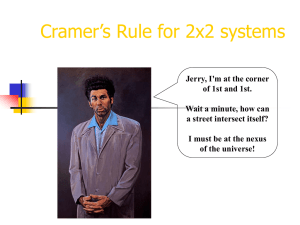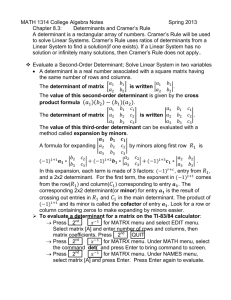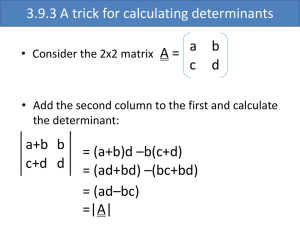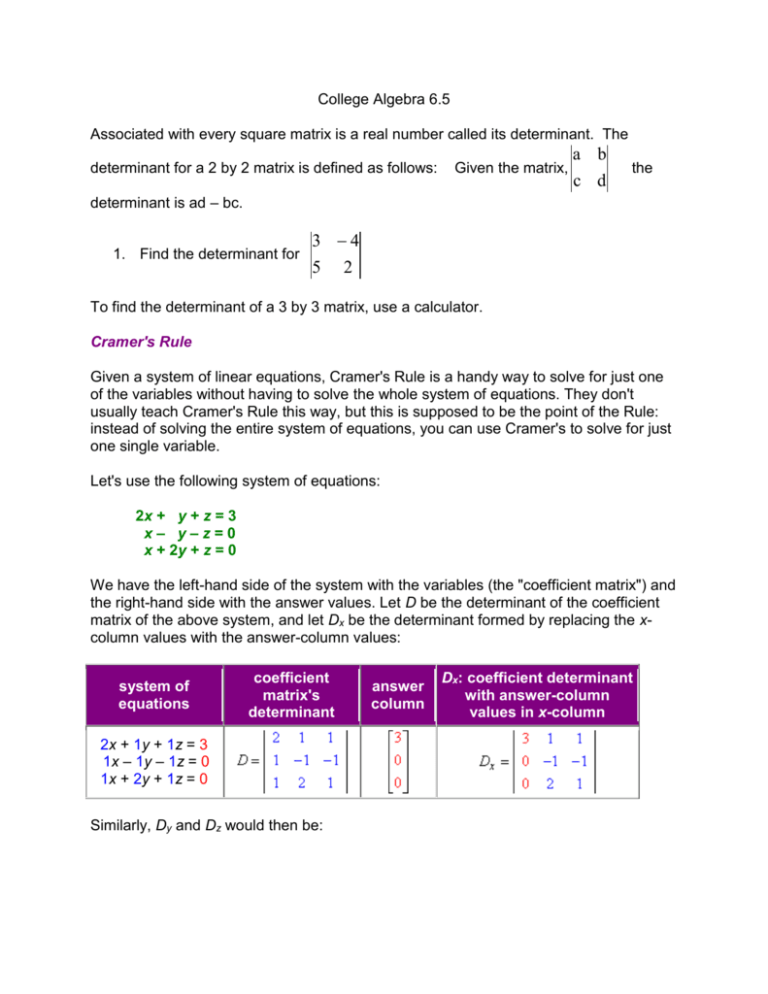
College Algebra 6.5
Associated with every square matrix is a real number called its determinant. The
determinant for a 2 by 2 matrix is defined as follows:
Given the matrix,
a b
c d
the
determinant is ad – bc.
1. Find the determinant for
3 4
5 2
To find the determinant of a 3 by 3 matrix, use a calculator.
Cramer's Rule
Given a system of linear equations, Cramer's Rule is a handy way to solve for just one
of the variables without having to solve the whole system of equations. They don't
usually teach Cramer's Rule this way, but this is supposed to be the point of the Rule:
instead of solving the entire system of equations, you can use Cramer's to solve for just
one single variable.
Let's use the following system of equations:
2x + y + z = 3
x– y–z=0
x + 2y + z = 0
We have the left-hand side of the system with the variables (the "coefficient matrix") and
the right-hand side with the answer values. Let D be the determinant of the coefficient
matrix of the above system, and let Dx be the determinant formed by replacing the xcolumn values with the answer-column values:
system of
equations
coefficient
matrix's
determinant
answer
column
Dx: coefficient determinant
with answer-column
values in x-column
2x + 1y + 1z = 3
1x – 1y – 1z = 0
1x + 2y + 1z = 0
Similarly, Dy and Dz would then be: Copyright © Elizabeth Stapel 2004-2011 All Rights
Reserved
Evaluating each determinant, we get:
Cramer's Rule says that x = Dx ÷ D, y = Dy ÷ D, and z = Dz ÷ D. That is:
x = 3/3 = 1, y = –6/3 = –2, and z = 9/3 = 3
That's all there is to Cramer's Rule. To find whichever variable you want (call it "ß" or
"beta"), just evaluate the determinant quotient Dß ÷ D. (Please don't ask me to explain
why this works. Just trust me that determinants can work many kinds of magic.)
Given the following system of equations, find the value of z.
2x + y + z = 1
x – y + 4z = 0
x + 2y – 2z = 3
To solve only for z, I first find the coefficient determinant.
Then I form Dz by replacing the third column of values with the answer column:
Then I form the quotient and
simplify:
z=2
The point of Cramer's Rule is that you don't have to solve the whole system to get the
one value you need. This saved me a fair amount of time on some physics tests. I forget
what we were working on (something with wires and currents, I think), but Cramer's
Rule was so much faster than any other solution method (and God knows I needed the
extra time). Don't let all the subscripts and stuff confuse you; the Rule is really pretty
simple. You just pick the variable you want to solve for, replace that variable's column of
values in the coefficient determinant with the answer-column's values, evaluate that
determinant, and divide by the coefficient determinant. That's all there is to it.
Almost.
What if the coefficient determinant is zero? You can't divide by zero, so what does this
mean? This means that you'll have to use some other method (such as Gauss Jordan
Elimination) to solve the system. If D = 0, you can't use Cramer's Rule.
Page 616 12 and 34
12
34.
2x y 3
x y 3
x y 2z 3
2 x 3 y z 9
x y 3z 11

